1. Possible Apple Scab Infection Predicted for Rains 31 March – 1 April; 2. Fire Blight Low to No Risk for Infections; 3. Do You See Orange Juniper Rust Galls on Cedars?
1. Apple scab could infect with the rains of 31 March into 1 April (Figures 1-4) but will it? Based on National Weather Service forecast for the next 48 h to 72 h, it appears that after these rain events leaf wetting will not continue, in other words the leaves will quickly dry (Figures 5-7). The low percent of released ascospores of 10-22% depending on a location in concert with the fast drying will not favor ascospores of apple scab fungus that do germinate to successfully infect the apple leaves and will not lead to a major scab infection warrantying a fungicide application (if the weather forecast for 31 March and 1 April stays as it is now). When we say that the apple scab fungus will not succeed in infection, we operate under the assumption that the weather forecast for 48 to 72 h (Figs 5-7) are more reliable and will not change. If the forecast does change, and leaf wetting continues for hours after the rains, mild scab infection could take place. Leaf wetting is shown as light blue bars at the bottom graphs in Figures 5-7, following rain events depicted with dark blue bars. So, the growers who have subscribed to RIMpro can profit from not applying a fungicide for this oncoming wet period, if the weather forecast for 31 March – 1 April becomes reality, by seeing in the model the destiny of the ascospores that will be released with these rain events, in terms of their germination and success in infection or not. RIMpro apple scab model follows each group i.e. many populations of released ascospores of apple scab fungus Venturia inaequalis from maturing in the leaf litter, ejection into the air, germination, and all the way up to their final destiny on green leaves – infection or not. It is a dynamic model unlike the static model offered in NEWA. In the population models like the RIMpro apple scab model, the infection biology is split up in a chain of subsequent processes for each ascospore group, and in each sub-process (release, germination, infection) the latest current scientific knowledge on ecology, biology, and epidemiology about that sub-process is applied and used in the model output prediction. RIMpro is a great tool for efficient scab management and used in commercial orchards in over 40 countries worldwide.
This dynamic nature of the RIMpro apple scab model accounts for the different destiny of the the first apple scab ascospore that lands on a leaf and the last spore that lands on the leaf. In a hypothetical example, the first ascospore was maybe released in the evening, and the last ones the next morning, and that time of release will impact their success in infection. The NEWA scab model (and all other scab models) only see one rain or wetting event. Such static models will start counting the infection hours in the morning because there is no ascospore ejection at night and that is all. In contrast, RIMpro model dynamically accounts for a very low ejection rate of ascospores when rain starts at night, and keeps track of these spores. When temperature changes or when the daylight arrives, RIMpro shows that ascospores accelerate in ejection. RIMpro keeps track of all the groups of ascospores and their destinies under variable weather conditions. Therefore, a high infection risk from scab occurs only when large number (many) ascospores infect the leaf at the same time.
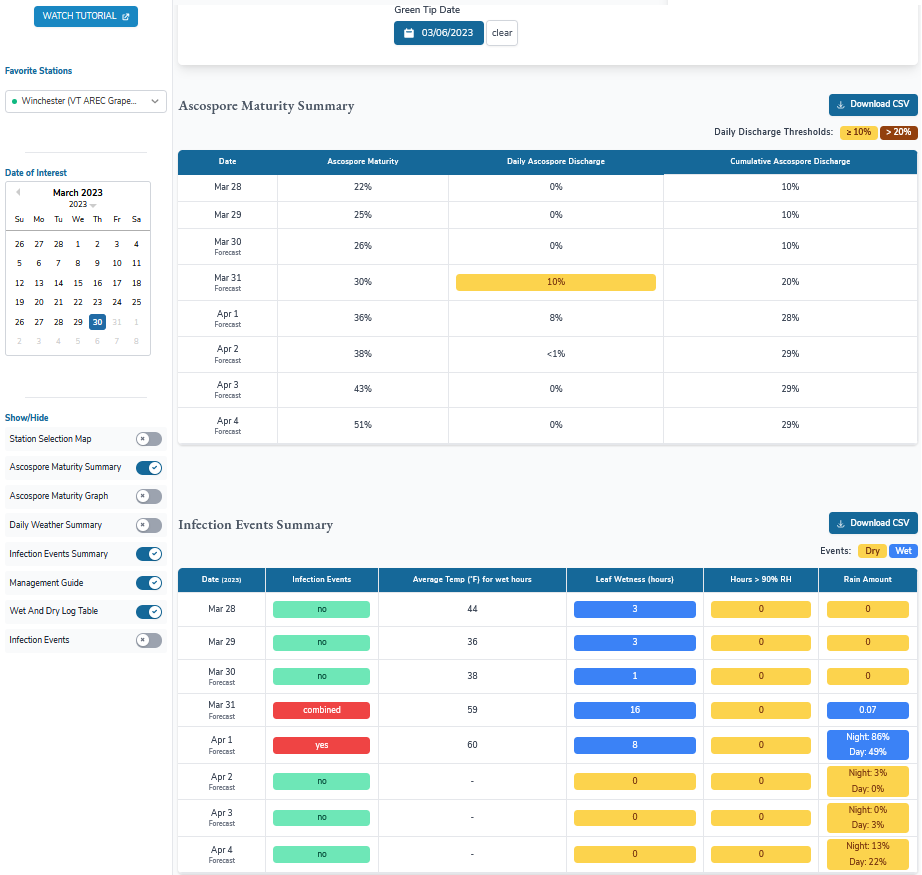
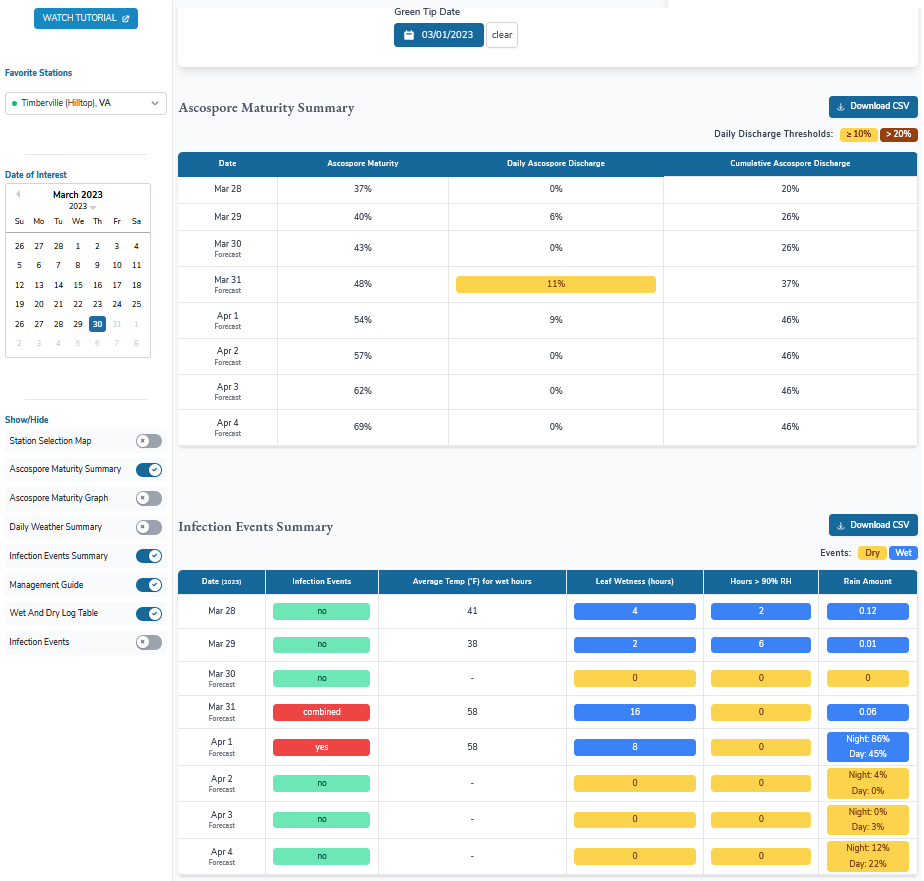
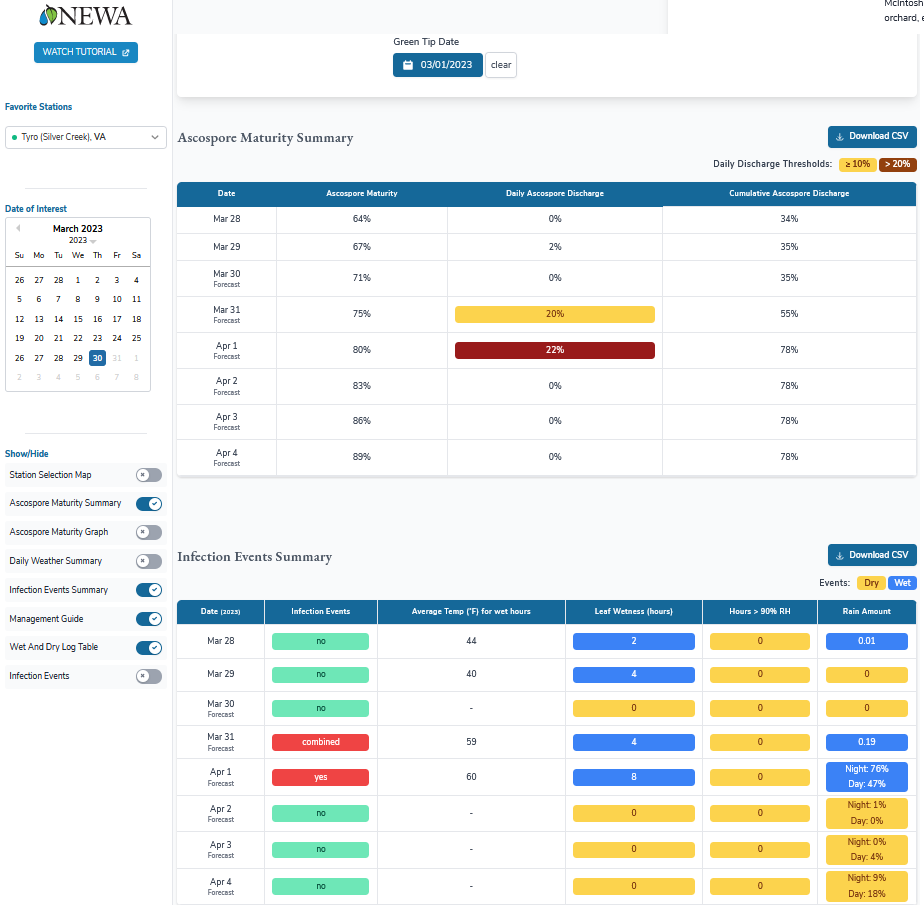
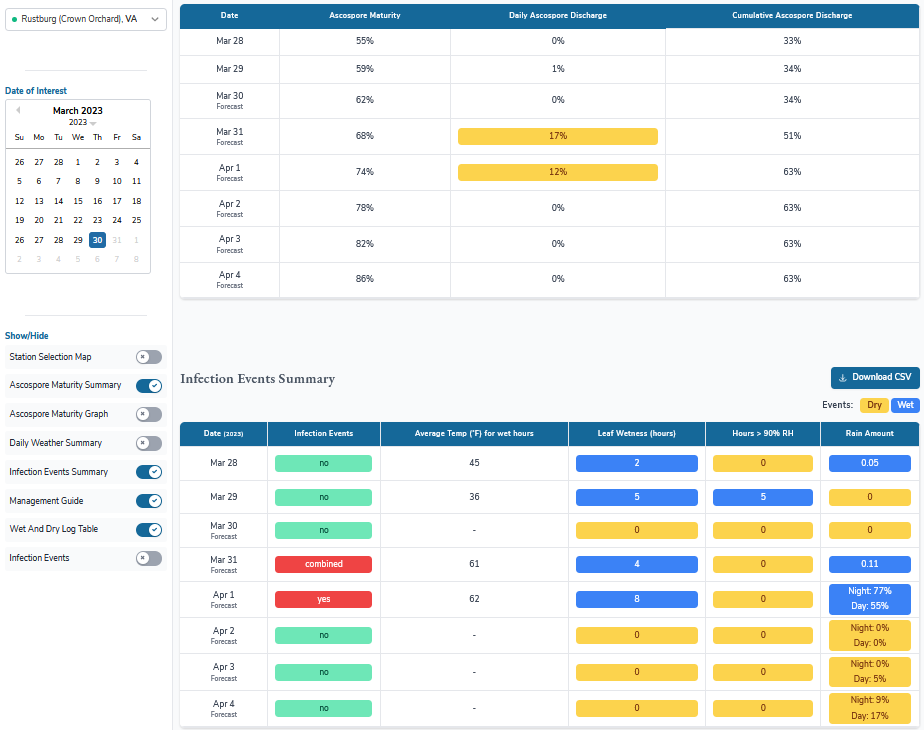
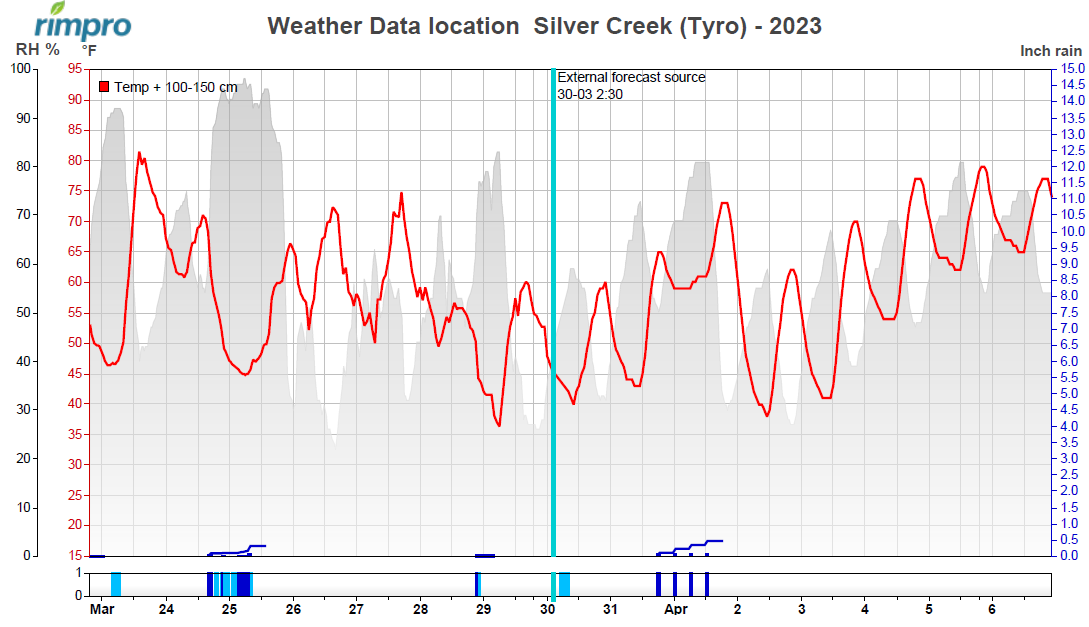
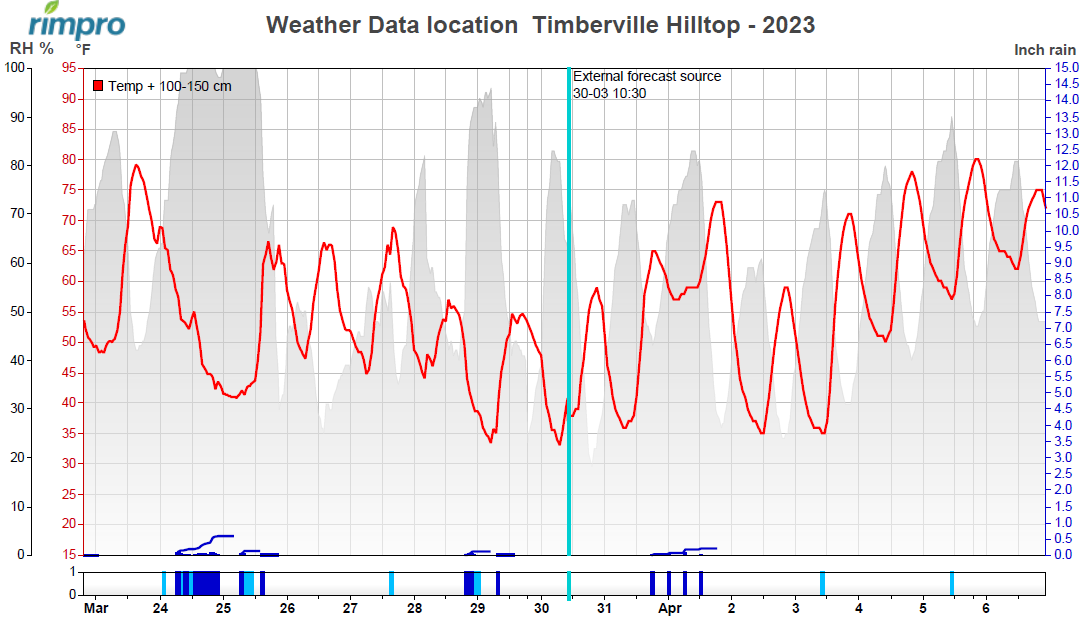
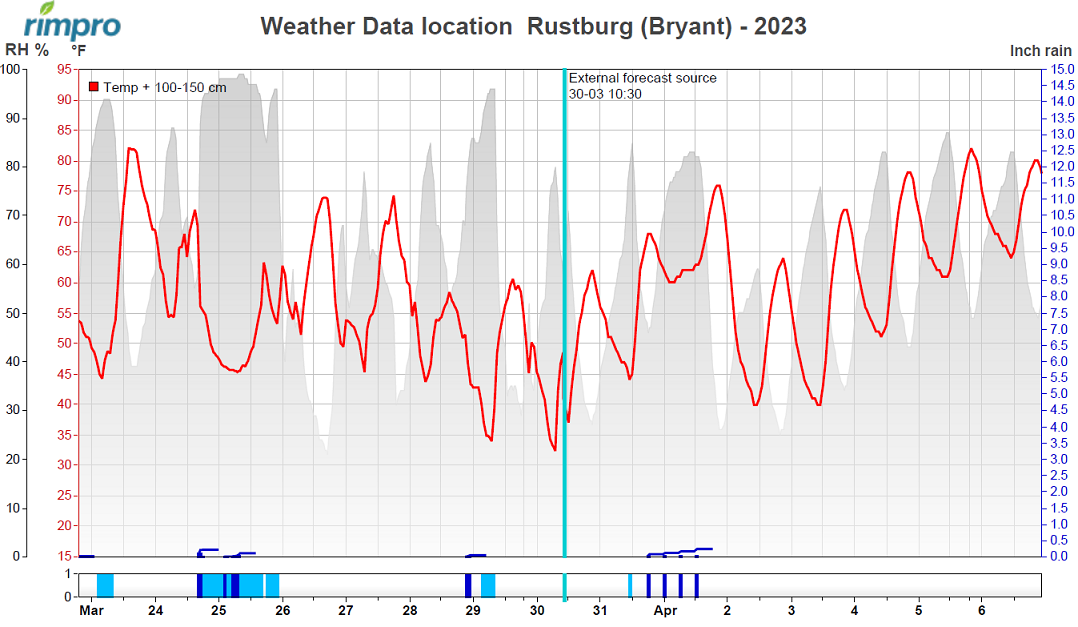
2. Fire blight is of low to no risk with oncoming rains, if weather forecast we see now stays the same, because the EIP value will not approach 100 and turn to dark red field indicating infection. However, keep looking at the model twice daily and if weather will warm up, the model will indicate if rain events will allow infection:
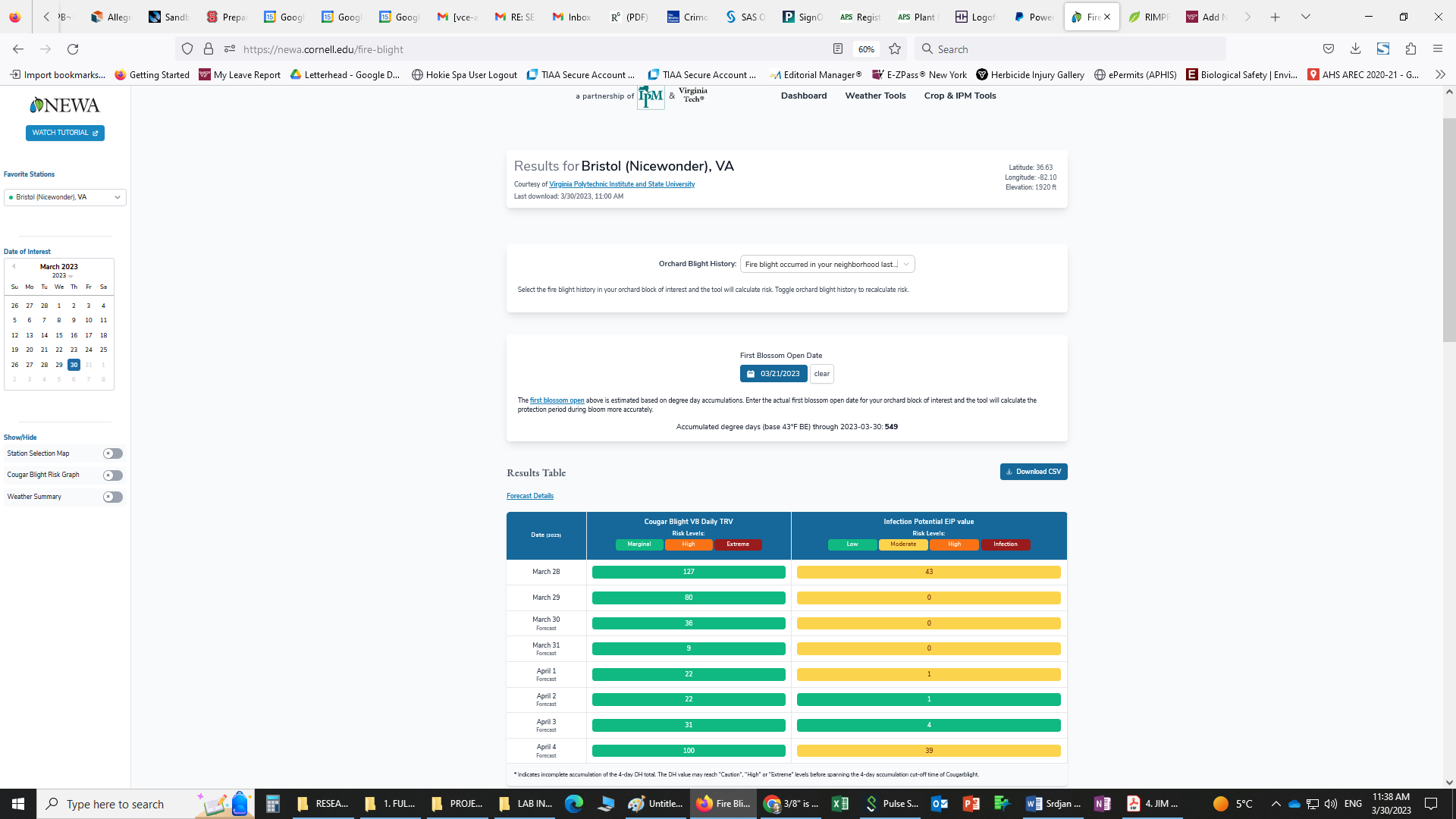
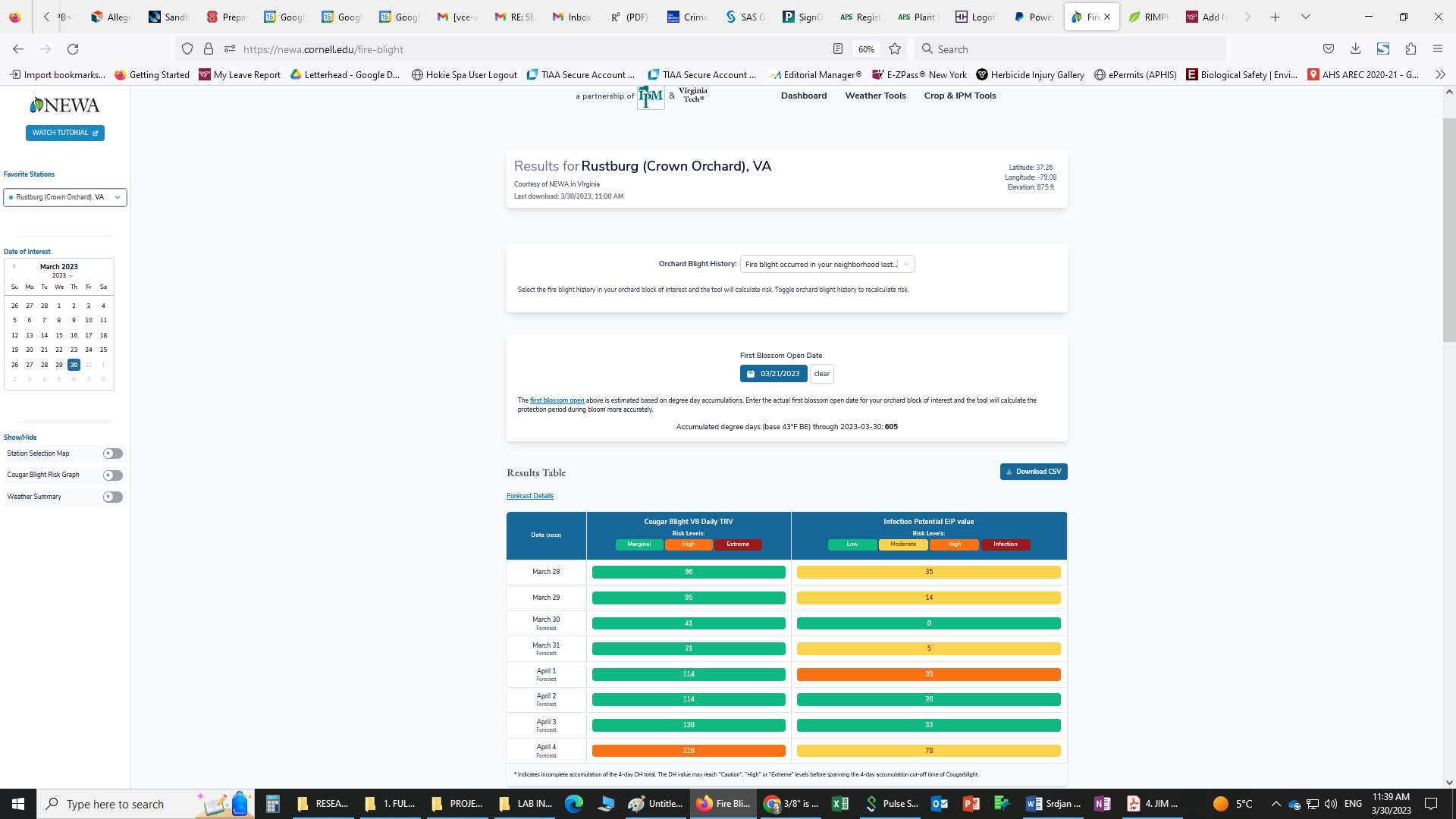
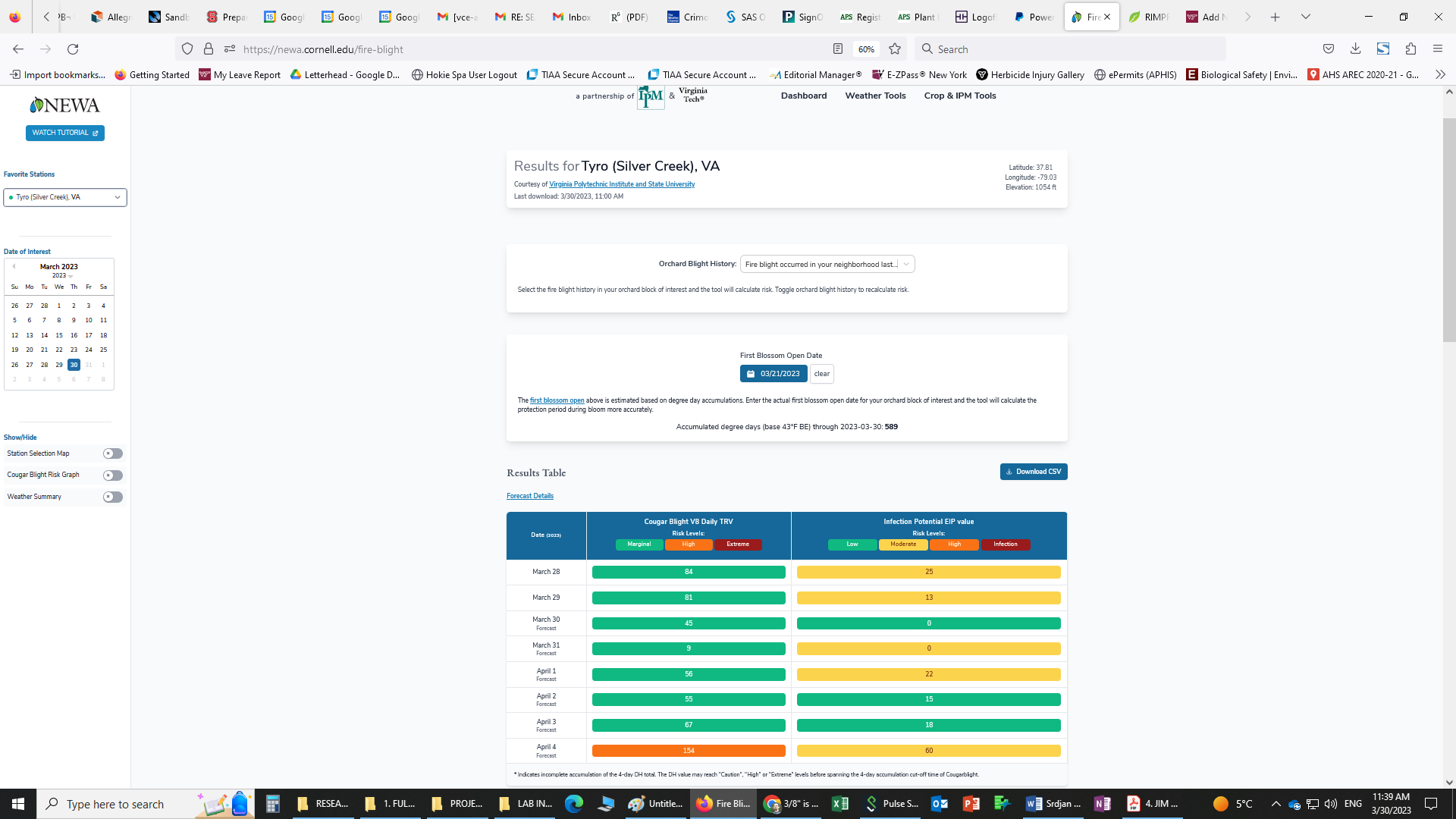
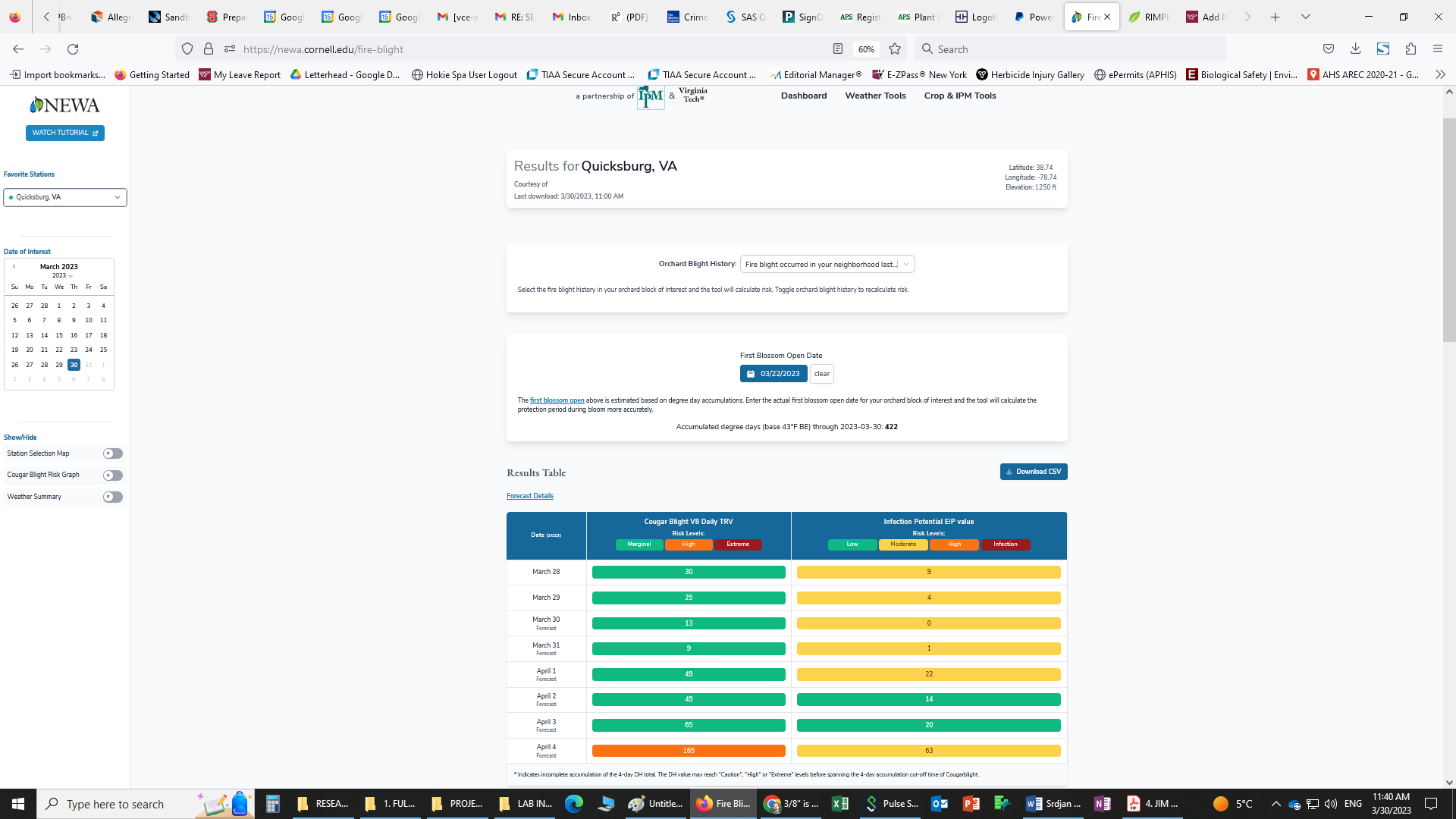

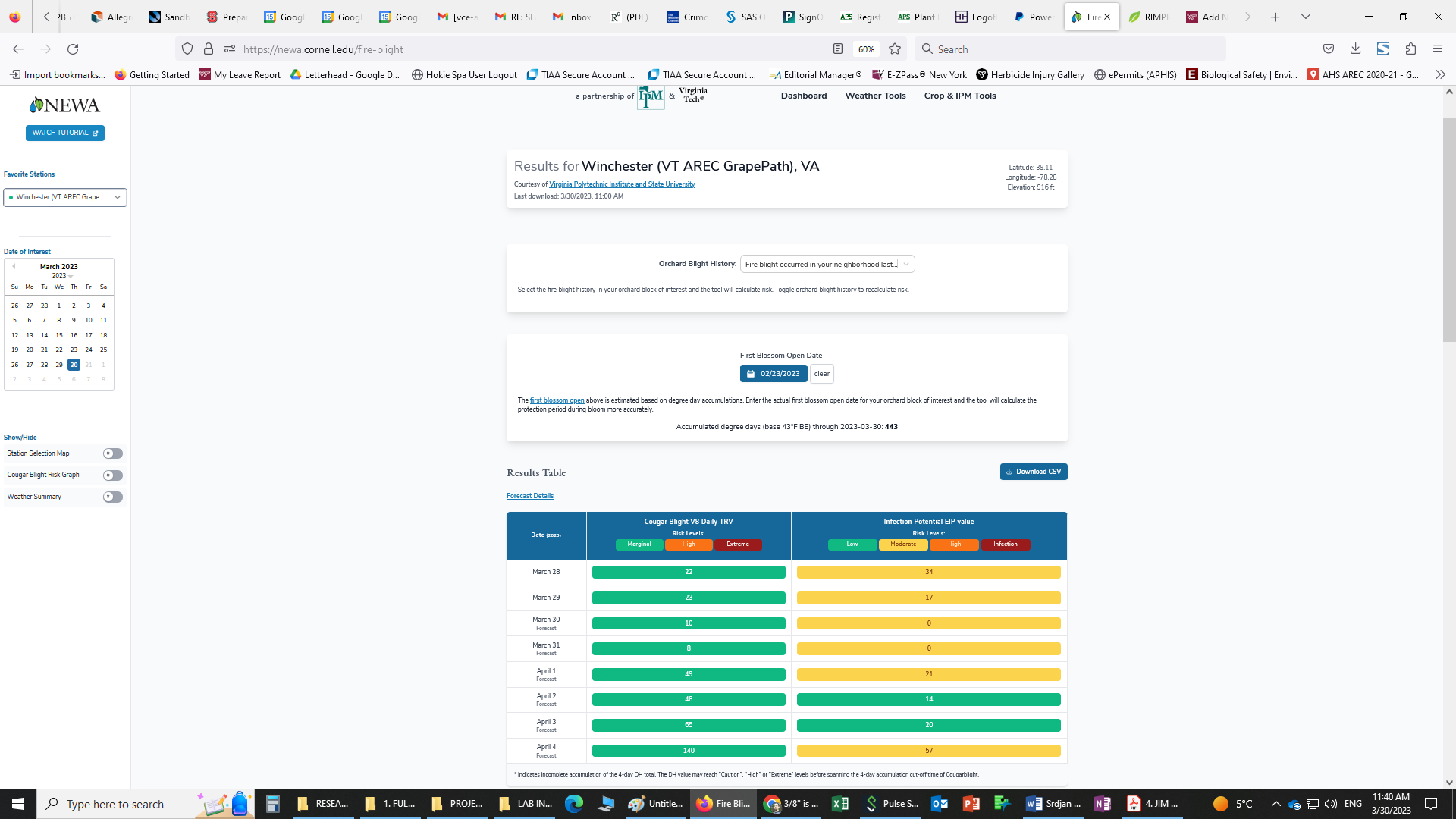
3. Keep an Eye on Juniper Rust Galls on Cedars – do you see them on near by cedars or not? If the galls are orange and moist, infections are possible but will be severe if warm rain occurs. When this first warm rain occurs and galls are orange and gummy, be ready to apply an SI (DMI) fungicide and keep the SI (DMI) fungicides + mancozeb (3 lb/A) about every 14 days for rust control.
